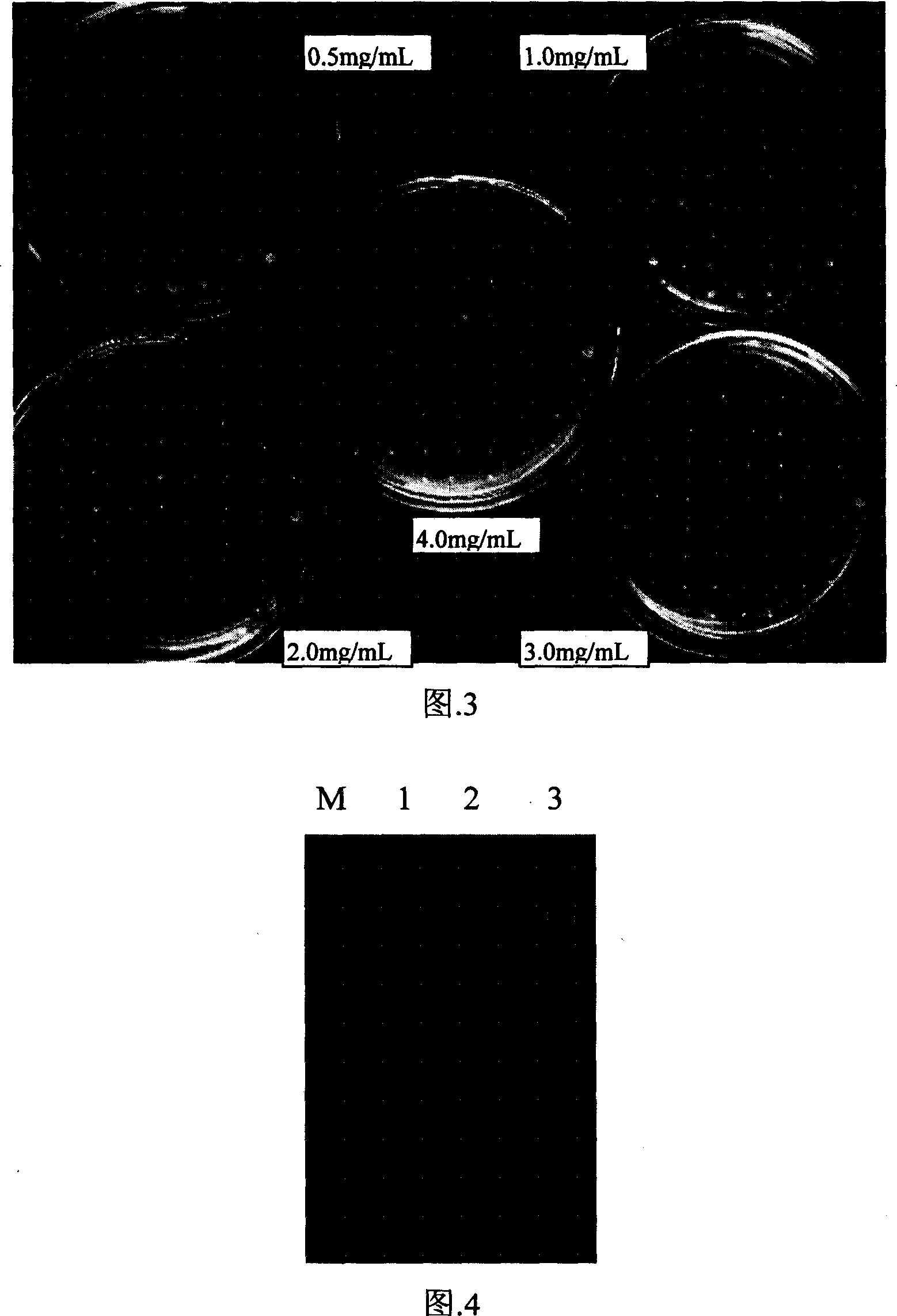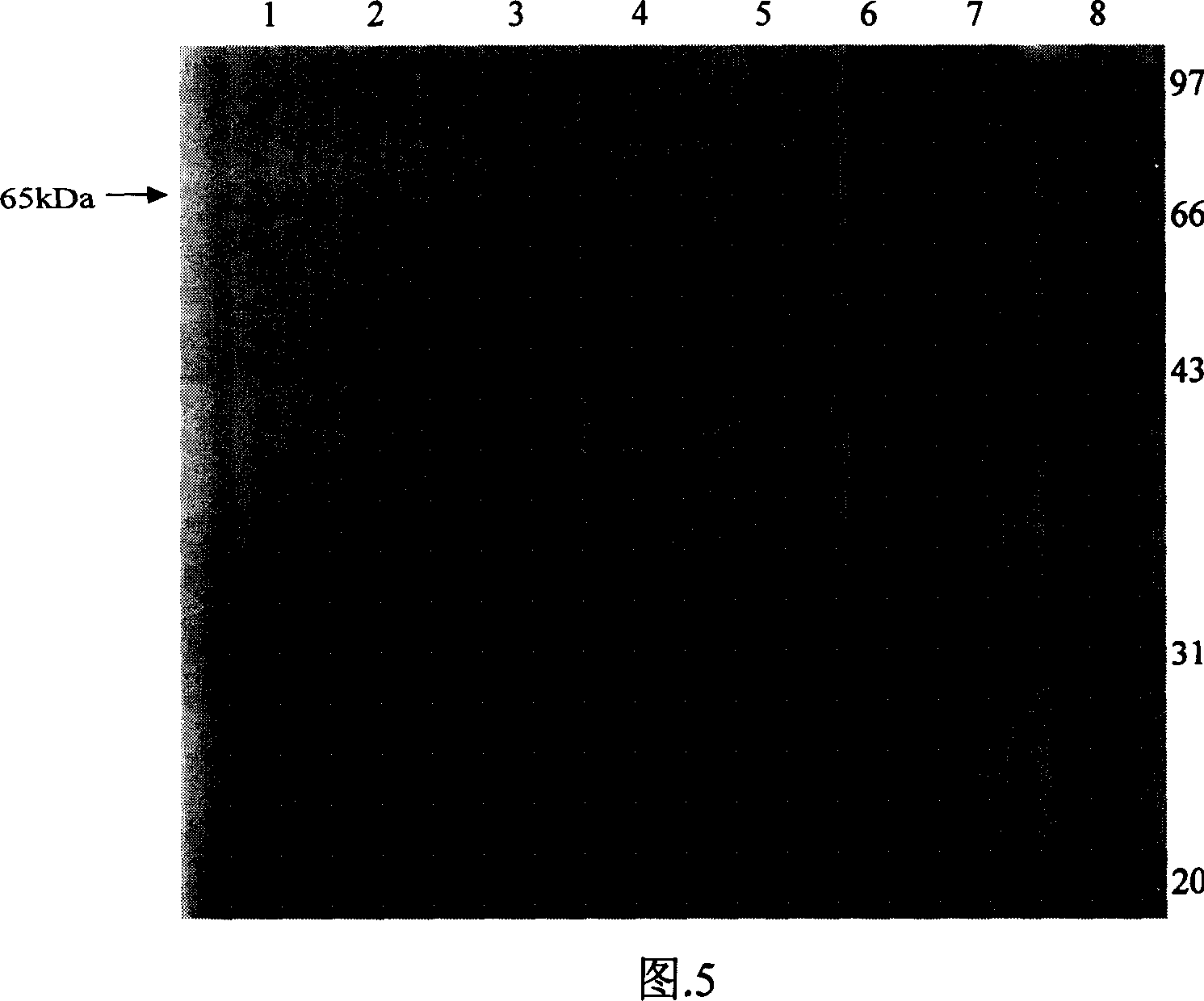Yeast engineering strain expressing chaetomium thermophilum gla gene and constitution method
A technology of Chaetomium thermophilus and yeast engineering, which can be used in genetic engineering, microorganism-based methods, plant genetic improvement, etc., and can solve problems such as no reports of thermophilic saccharification enzymes.
- Summary
- Abstract
- Description
- Claims
- Application Information
AI Technical Summary
Problems solved by technology
Method used
Image
Examples
Embodiment approach 1
[0083] Embodiment 1: Cloning method of Chaetomium thermophilium glucoamylase gla gene:
[0084] (1) Extraction of RNA: Total RNA was extracted according to the instructions of the Trizol kit.
[0085] (2) Synthesis of the first strand of cDNA: the first strand of cDNA was synthesized using Oligo(dT)20 as a primer according to the instructions of the Reverse Transcription Reaction kit from Promega. The reaction conditions are: 42°C for 1 hour; 95°C for 5 minutes.
[0086] (3) PCR reaction: polymerase chain reaction (PCR) reagents and conditions are:
[0087] First mix the following reagents together:
[0088] 10X reaction buffer 2.5μl
[0089] 25mM MgCl 2 2μl
[0090] 10mM dNTP 2μl
[0091] Upstream primer (10μM) 1μl
[0092] Downstream primer (10μM) 1μl
[0093] Template cDNA 2μl
[0094] Taq DNA polymerase 0.5μl
[0095] Sterilized double distilled water 14μl
[0096] Total volume 25μl
[0097] The PCR reaction conditions were: pre-denaturation at 95°C for 4 ...
Embodiment approach 2
[0103] Embodiment 2: For the nucleotide sequence and amino acid sequence of the Chaetomium thermophilium glucoamylase ebhl gene, see the "Summary of the Invention" section.
Embodiment approach 3
[0104] Embodiment 3: Construction of expression vector
[0105] (1) Design primers according to the full coding sequence of the mature peptide of cbhl gene, and introduce SnaB I and Not I respectively
[0106] Restriction sites:
[0107] Forward primer ep-gla5: 5'-GCG GCGGTCGATTCCTACATTG-3' (SnaB I)
[0108] Reverse primer ep-gla3: 5'-GTC TCACCAGTGGTCTTGACCAC-3' (Not I)
[0109] Polymerase chain reaction was carried out using the reverse-transcribed cDNA of Chaetomium thermophila total RNA as a template
[0110] (2) Take 2 μl of the PCR product and connect it to the pGEM-T easy vector, and the operation steps are carried out according to the product manual of Promega Company. Then the ligation product was transformed into Escherichia coli DH5α strain, and the surface was coated with 5-bromo-4-chloro-3-indole-β-D-galactoside and X-gal on the LB plate containing ampicillin (100 μg / mL) Grow overnight. Pick white colonies and culture them overnight in LB liquid medium. P...
PUM
 Login to View More
Login to View More Abstract
Description
Claims
Application Information
 Login to View More
Login to View More - R&D
- Intellectual Property
- Life Sciences
- Materials
- Tech Scout
- Unparalleled Data Quality
- Higher Quality Content
- 60% Fewer Hallucinations
Browse by: Latest US Patents, China's latest patents, Technical Efficacy Thesaurus, Application Domain, Technology Topic, Popular Technical Reports.
© 2025 PatSnap. All rights reserved.Legal|Privacy policy|Modern Slavery Act Transparency Statement|Sitemap|About US| Contact US: help@patsnap.com



